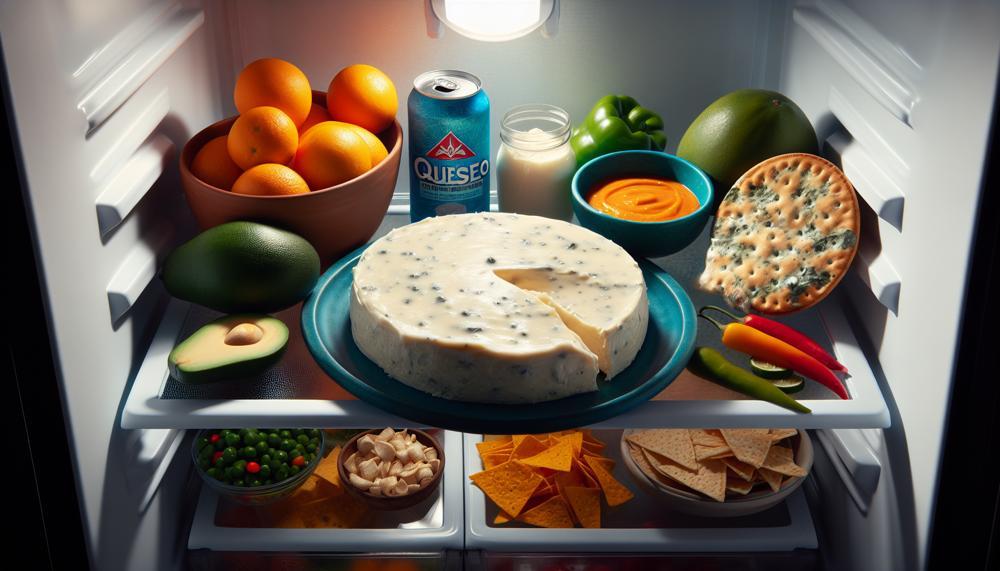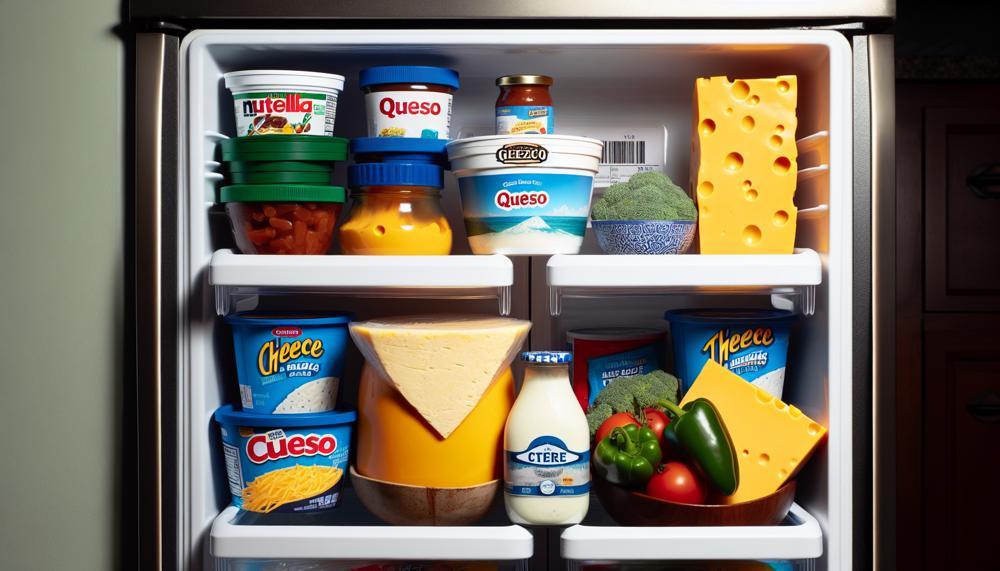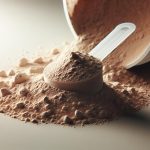Do you crave that creamy, cheesy goodness of queso? Are you a self-proclaimed queso connoisseur? Well, my fellow queso lovers, let’s talk about the shelf life of this beloved dip. Because let’s face it, no one wants to waste a perfectly good batch of queso. So grab your chips and get ready to learn some interesting facts about storing this tasty snack.
Queso may be a staple in many households, but it has a relatively short shelf life compared to other dairy products. On average, it can last up to 5-7 days in the fridge. But don’t worry, with proper storage and handling, you can prolong its freshness and enjoy it for longer.
The key to keeping your queso fresh is to store it properly. Make sure to keep it in an airtight container or wrap it tightly with plastic wrap. This will prevent air from getting in and causing the dip to spoil faster.
It’s also essential to avoid leaving your queso out at room temperature for too long. Bacteria love warm environments and can quickly grow on your delicious dip if left out for extended periods. So make sure to put it back in the fridge after serving.
For optimal taste and quality, it’s best to consume your queso within 3-4 days of making or opening it. If you notice any changes in color or texture, err on the side of caution and discard the dip.
And let’s not forget about double-dipping. Always use a clean utensil when serving your queso and avoid contaminating the entire batch with bacteria from your mouth.
Now that you know how long your queso will last in the fridge, go ahead and indulge without worrying about wasting any.
Contents
- 1 How to Store Queso Dip and Keep It Fresh?
- 2 Does Queso Go Bad?
- 3 How to Tell If Queso Dip Is Bad?
- 4 Can You Eat Queso the Next Day?
- 5 Can You Eat Queso That Sat Out All Night?
- 6 How Long Does Queso Last?
- 7 How Long Does Queso Last in the Fridge?
- 8 How Long Does Queso Last at Room Temperature?
- 9 How to Tell If Queso Dip Is Bad?
- 10 Can You Eat Queso the Next Day?
- 11 Can You Eat Queso That Sat Out All Night?
- 12 How Long Does Queso Last?
- 13 How Long Does Queso Last in the Fridge?
- 14 How Long Does Queso Last at Room Temperature?
- 15 Conclusion
How to Store Queso Dip and Keep It Fresh?
To ensure your queso dip stays fresh and safe to eat, proper storage techniques are crucial.
Keep in mind the following methods for storing queso dip in the fridge:
Seal it tight
When storing homemade queso, use an airtight container or tightly wrap it with plastic to prevent air and bacteria from entering.
For store-bought queso, ensure the container is properly sealed before refrigerating.
Refrigerate immediately
After use, refrigerate your queso as soon as possible to slow down bacterial growth.
Keep it at a consistent temperature of 35-40°F to maintain its freshness.
Check for spoilage signs
Always inspect your queso for signs of spoilage before consuming, such as an off smell or taste, slimy texture, or visible mold growth. If any of these are present, discard the queso to avoid food poisoning risks.
Consume within recommended timeframes
The shelf life of different types of queso varies – homemade queso can last up to 4 days in the fridge, while store-bought varieties can last several weeks if unopened and properly sealed.
Refer to the product’s best-by date and consume within the recommended time frame for optimal freshness.
Freeze for longer storage
If you need to store your queso for longer than its recommended shelf life, freezing is an option. Store it in an airtight container or freezer bag and consume it within 6 months for best quality.
Reheat properly
When reheating your queso, use a microwave or double boiler to ensure even heating and consistency. It is best to consume reheated queso within a few days after thawing.
Does Queso Go Bad?
The answer is yes, but there are some factors to consider to ensure its safety and quality. Let’s dive into the details.
| Type of Queso | Recommended Timeframe for Consumption (Opened) | Recommended Timeframe for Consumption (Frozen) |
| Commercial Queso Dips (jarred) | 1 week | 2-3 months |
| Homemade Queso Dips | 3-5 days | 1 month |
| Queso Blanco/White Queso | 1 week | 2-3 months |
| Jalapeño/Pepper Jack Queso Dips (commercial) | 1 week | 2-3 months |
| Jalapeño/Pepper Jack Queso Dips (homemade) | 3-5 days | 1 month |
After thorough research, we found that queso can indeed last for a significant amount of time when stored properly in the fridge. However, the recommended timeframe for consumption may vary depending on the type of queso and how it is stored.
It is crucial to follow proper storage guidelines to maintain its freshness and safety.
Proper Storage Tips
To keep your queso fresh and safe, make sure to store it in an airtight container or sealable bag before refrigerating it. Exposure to air and moisture can accelerate spoilage, so it is essential to seal it tightly.
Store-bought queso dips usually come in airtight jars, but if you transfer it to another container, make sure it is sealed tightly.
Signs Of Spoilage
Like most dairy products, queso can spoil and become unsafe to eat. Keep an eye out for mold growth, changes in texture such as separation or clumps, and unpleasant odors or flavors.
If your queso shows any of these signs, it is best to discard it for safety reasons.
Freezing
If you need to prolong the shelf life of opened queso, freezing is an option. It can extend its freshness for 2-3 months. However, refreezing previously thawed queso is not recommended as it can pose food safety risks and affect its quality.
It is best to freeze queso in smaller portions so you can thaw only what you need without having to refreeze it.
How to Tell If Queso Dip Is Bad?
There are several telltale signs that you can watch out for to determine whether your queso dip has gone bad and is no longer safe to consume. These include unpleasant smells, visible mold, changes in texture, and unusual flavors.
Unpleasant smells
If your queso dip gives off a strong, pungent odor, it is most likely spoiled and should be avoided.
This could indicate the presence of harmful bacteria or contamination.
Visible mold
The growth of mold is a clear indication that your queso dip has become unfit for consumption.
Mold may appear as green, white, or black spots on the surface of the dip. If you spot any mold, it is best to discard the entire batch of queso.
Changes in texture
If your queso dip has turned lumpy, grainy, or slimy, it is no longer safe to eat.
These changes in texture could be a result of spoilage or inadequate storage.
Unusual flavors: Trust your taste buds
if your queso dip tastes sour, bitter, or rancid, it is most likely spoiled and should not be consumed. In such cases, it is best to discard the dip altogether.
To prevent your queso dip from spoiling, make sure to store it properly in an airtight container in the fridge at a consistent temperature between 35-40°F.
Additionally, using clean utensils when serving and portioning out the dip, as well as freezing any leftovers can help prolong its shelf life.
Can You Eat Queso the Next Day?
The delicious and creamy queso dip is a popular choice for parties, game nights, or as a late-night snack. But what if you have leftovers? Can you eat queso the next day? The answer is yes, but there are some important things to keep in mind to ensure it stays safe and tasty.
Firstly, it’s important to properly store queso in an airtight container or tightly covered with plastic wrap. This prevents air exposure and helps maintain its freshness. Improper storage can lead to bacterial growth, affecting both the taste and safety of the dip.
It’s also recommended to stir the queso before reheating to ensure even distribution of heat.
Can You Eat Queso That Sat Out All Night?
It is not recommended to consume queso that has been left out overnight. When food is left at room temperature for more than two hours, bacteria can start to grow and potentially cause food poisoning.
This is especially true for queso, a dairy-based product, as the risk of bacterial growth and contamination is higher.
Why is it unsafe to eat queso that has been left out overnight?
When cheese is exposed to warm temperatures, moisture can promote bacterial growth. This can lead to the production of toxins that can make you ill if consumed.
Additionally, the longer a food is left out at room temperature, the higher the chances of bacteria multiplying and causing food poisoning.
Which types of cheese can be safely left out?
Some hard cheeses like cheddar, parmesan, and Swiss can be stored outside the fridge due to their low moisture content and high acidity. However, this only applies if they are stored properly and remain uncut.
Once cheese has been cut into, it becomes exposed to bacteria and should be refrigerated.
How should queso be stored properly?
If you plan on keeping your queso dip for more than two hours at room temperature, it is important to store it in an airtight container and place it back in the fridge. This will slow down bacterial growth and keep your dip safe to eat.
It is also important to thoroughly stir the queso before reheating to ensure an even distribution of heat and prevent any cold spots where bacteria may have grown.
What are some indications that queso has spoiled?
If your queso has a bad smell or unusual appearance, it is best to discard it. If you notice any mold growing on the surface, do not consume it as mold can produce harmful toxins.
When in doubt, it is always better to err on the side of caution and throw away any questionable leftovers.
| Cheese Type | Room Temperature Storage | Cut or Uncut |
| Hard cheeses (cheddar, parmesan, Swiss) | Yes | Uncut |
| Soft cheeses (brie, camembert, feta) | No | Uncut |
| All other cheeses | No | Cut |
How Long Does Queso Last?
When it comes to storing food, safety should always be your top priority. This is especially crucial for perishable items like queso, which can spoil quickly if not stored correctly. In this section, we will discuss the recommended fridge shelf life for queso and provide some tips on how to maintain its freshness and safety.
The recommended fridge shelf life for queso depends on a few factors, such as whether it is freshly made or store-bought and if it contains preservatives. Freshly made queso can last up to five days in the fridge if stored in an airtight container.
However, store-bought queso can last up to two weeks due to the added preservatives.

It is essential to note that queso tends to spoil quickly, so it is best to consume it within a few days of opening. If you have purchased queso from a restaurant, it should be consumed within three to five days after refrigeration.
To ensure the longevity and safety of your queso, here are some helpful tips:
- Always store queso in an airtight container.
- Keep it refrigerated at all times.
- Do not leave queso out at room temperature for more than two hours.
- If you plan to freeze your queso, do so immediately after purchasing or making it.
- When thawing frozen queso, use the defrost setting on your microwave or let it thaw in the fridge.
Here is a table summarizing the recommended fridge shelf life for different types of queso:
| Type of Queso | Fridge Shelf Life |
| Freshly Made | Up to 5 days |
| Store-Bought with Preservatives | Up to 2 weeks |
| Restaurant Bought | 3-5 days |
How Long Does Queso Last in the Fridge?
The shelf life of queso in the fridge may vary depending on several factors, such as the ingredients used and the preparation method, proper storage practices, and the specific type of queso.
Typically, when stored correctly in the fridge, queso can last for approximately one week. However, it is essential to inspect for any signs of spoilage, such as unusual textures or off smells, before consuming.
Factors That Can Affect Shelf Life:
The ingredients used in making queso and the method of preparation can significantly impact its shelf life.
By using fresh ingredients and following proper food safety practices, you can help extend its longevity. Additionally, proper storage methods are crucial in keeping queso fresh for longer periods.
Different Types of Queso:
Queso comes in various types, with popular variations including queso blanco, queso fresco, and queso de bola.
The type of cheese used in making queso can also affect its flavor and consistency.
Storing Queso at Room Temperature:
It is not recommended to store queso at room temperature as it is a perishable food item that can lead to bacterial growth.
It is best to always refrigerate queso to ensure its safety and freshness.
Freezing Queso:
If you have any leftover queso that you want to save for later, you can freeze it to extend its shelf life by several months.
However, freezing may slightly alter its texture.
Shelf Life of Homemade Queso:
When properly stored in an airtight container in the fridge, homemade queso can last for about 4 to 5 days.
It is important to use clean utensils when serving and discard any remaining queso if it shows signs of spoilage.
Shelf Life of Store-Bought Queso:
The shelf life of store-bought queso may be longer due to preservatives and packaging.
Unopened queso can last for several months when stored in a cool, dry place. Once opened, it can last for up to 2 weeks when refrigerated and tightly sealed.
Safe Consumption Practices:
To ensure the safety of your queso, it is essential to store it in the fridge at a temperature below 40°F (4°C).
Before consuming, always check for signs of spoilage, such as unusual colors, green spots, mold growth, slimy or grainy texture, and off odor or sour taste.
Reheating/Serving Suggestions:
To reheat queso, you can use a microwave or double boiler. It is best served as a dip with tortilla chips, nachos, quesadillas, tacos, or burritos. You can also add toppings to nachos and use flavorful accompaniments.
Keep it warm by using a slow cooker or chafing dish when serving as a dip.
How Long Does Queso Last at Room Temperature?
As a general rule, it is recommended to place queso in the refrigerator within 2 hours of being served at room temperature. However, keep in mind that certain factors, such as the ingredients used and the temperature of the room, can impact this timeframe. It is of utmost importance to adhere to proper food safety protocols and promptly refrigerate queso to avoid any potential risk of foodborne illnesses.
One significant factor that can affect the time frame for refrigerating queso is the ingredients used. For instance, if your queso contains dairy products like milk or cheese, it is best to refrigerate it sooner rather than later. Dairy products can spoil quickly when left at room temperature, making them a breeding ground for harmful bacteria.
Moreover, the temperature of the room can also play a crucial role in determining how long queso can stay at room temperature before it needs to be refrigerated. If you are serving queso on a hot summer day, it is best to promptly place it in the fridge to prevent it from spoiling.
To ensure food safety and prevent any potential risks, it is crucial to follow proper guidelines and refrigerate queso promptly. One way to do this is by utilizing a timer and setting it for 2 hours after serving the queso. This way, you can ensure that your queso stays fresh and safe to consume.
How to Tell If Queso Dip Is Bad?
Well, there are a few key indicators that can help you determine if it has gone bad. Pay attention to the texture, smell, and visible signs of mold growth. Plus, don’t forget to consider the type of queso and how it was stored.
Check the texture
Instead of being smooth and creamy, a bad queso dip may appear clumpy or grainy. This change in texture could be a sign of bacterial growth or separation of ingredients.
Smell it
A good queso dip should have a mild and pleasant smell. If it smells sour, acidic, or pungent, it’s likely that bacteria have started to grow.
Look for mold
If you see any visible mold growth on the surface of your queso dip, it’s best to throw it out. This is a clear indication that it has spoiled and should not be consumed.
Consider the type
Keep in mind that different types of queso have varying shelf lives. For example, queso fresco and queso blanco have shorter shelf lives compared to processed cheeses like nacho cheese. Be sure to check expiration dates and follow storage recommendations for each type.
Check how it was stored
Proper storage is crucial in extending the shelf life of queso dip. If your dip has been left at room temperature for more than 2 hours, it’s best to discard it as bacteria can grow rapidly at room temperature.
Can You Eat Queso the Next Day?
Yes, it is generally safe to consume refrigerated queso within 3-5 days for the best quality. However, it is important to use fresh ingredients and proper food safety practices when making queso at home to prevent contamination.
Homemade with pre-packaged ingredients (such as canned tomatoes or processed cheese)Up to 3 daysUp to 3 months
| Type of Queso | Refrigeration | Freezing |
| Store-bought | Up to 5 days | Not recommended |
| Homemade with fresh ingredients | Up to 5 days | Up to 3 months |
Proper storage is crucial in maintaining the quality and safety of queso. Refrigerated queso that has been stored properly and shows no signs of spoilage, such as mold growth or a foul smell, is safe to eat. However, if you are unsure about the safety of your queso, it is best to err on the side of caution and discard it.
For longer storage, freezing is the best option. When freezing queso, use an airtight container or freezer bag and label it with the date. Thaw frozen queso in the fridge before consuming and use it within 3 months for the best quality.
Can You Eat Queso That Sat Out All Night?
It is not safe to consume queso that has been left out all night. The standard rule for perishable food is that it should not be kept at room temperature for more than two hours. This is due to the rapid growth of bacteria in the “danger zone” between 40°F and 140°F. As a dairy product, queso is especially susceptible to bacterial growth if left out for extended periods.
Although it may seem wasteful to throw away perfectly good queso, it is crucial to prioritize food safety. Consuming queso that has been left out all night can lead to food poisoning and other health complications.
Here is a table outlining the storage guidelines for queso:

| Type of Queso | Refrigerator Storage | Freezer Storage |
| Fresh queso (unopened) | 3-5 days | Not recommended |
| Fresh queso (opened) | 3-5 days | Not recommended |
| Hard cheese (properly aged and cured) | Not recommended | 3-6 months |
How Long Does Queso Last?
If you’re a fan of queso, then you know how important it is to store it properly to ensure its freshness and safety. But how long can queso actually last? Well, the answer may surprise you.
On average, queso can last for about 5-7 days when stored in an airtight container in the fridge. However, this can vary depending on the type of queso and how it was made. It’s always a good idea to check the expiration date and look for any signs of spoilage before digging in.
And if you happen to have some leftover queso (which is rare, let’s be honest), you can freeze it for later use.
Frozen queso can last for several months in the freezer, but may lose some of its texture and flavor.
How Long Does Queso Last in the Fridge?
Queso, a popular Mexican cheese dip, can last for up to one week in the fridge if stored properly. However, the shelf life may vary depending on the type of queso and how it was made. It is crucial to store queso in an airtight container or seal the original packaging tightly to prevent bacteria growth and maintain its freshness.
Determining if queso has gone bad is important to avoid consuming spoiled food. Signs of spoilage include mold growth on the surface, discoloration, unusual colors, off-putting smells, or bitter flavors. If any of these signs are present, it is best to discard the queso as it could cause food poisoning.
Several factors can affect the shelf life of queso, such as its ingredients and preparation method. Soft cheeses like Brie have a shorter shelf life of 1-2 weeks, while harder cheeses like cheddar can last up to 3-4 weeks in the fridge. Homemade queso may not have preservatives, making it more prone to spoilage compared to store-bought queso.
To ensure that your queso stays fresh for as long as possible, it is essential to store it at a consistent temperature below 40°F. This will prevent bacteria growth and keep your queso safe to consume.
How Long Does Queso Last at Room Temperature?
It is crucial to not leave queso at room temperature for more than 2 hours. Bacteria can quickly grow in foods that are not properly stored, and queso is no exception.
To guarantee the safety of your queso, it is vital to refrigerate it immediately after serving or consuming it and to diligently monitor the time it spends at room temperature.
As mentioned previously, appropriate storage of queso is essential in preserving its freshness and preventing bacterial growth. This includes storing it in an airtight container and keeping it away from strong-smelling foods that may affect its flavor.
In addition, using clean utensils when scooping out queso is crucial to avoid cross-contamination.
If you are unable to finish your queso within 2 hours, it is imperative to refrigerate it immediately and consume it within a week.
In case you know that you will not be able to finish it within the recommended timeframe, consider dividing it into smaller containers and freezing them for future consumption.
However, keep in mind that freezing may alter the texture of queso, so it is best to consume it within a few weeks of freezing.
Conclusion
In summary, the lifespan of queso in the fridge is relatively short, lasting only 5-7 days.
However, with proper storage techniques such as using an airtight container and promptly refrigerating it after use, you can extend its freshness. Be sure to also follow recommended timeframes for consumption and avoid double-dipping to prevent bacterial growth.
By implementing these simple tips, you can savor every last drop of this delectable dip without fear of spoiling it.




